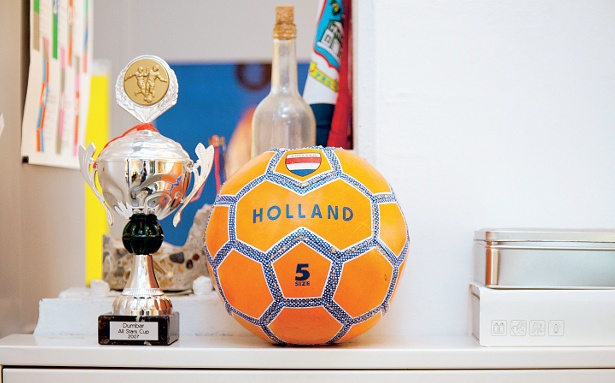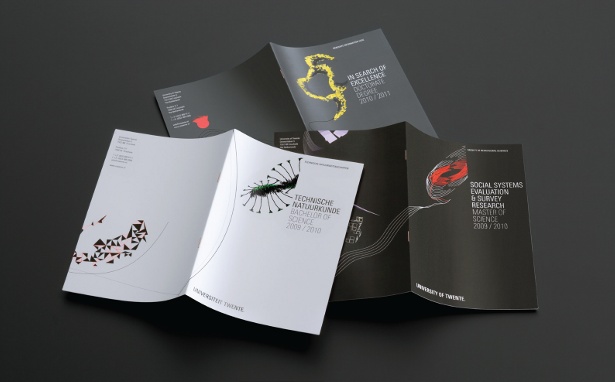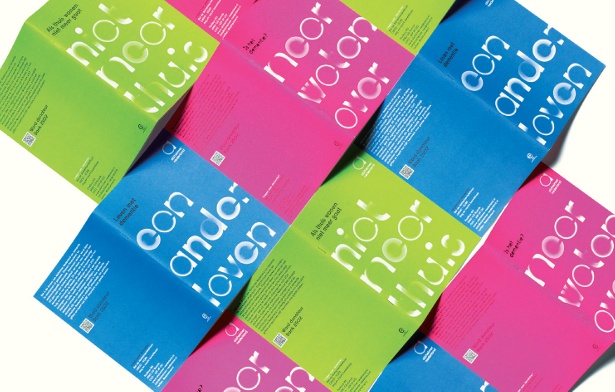Facebook’s top 10 social design secrets
Social design demands stepping outside of your comfort zone. Facebook’s Paul Adams offers a series of pointers to guide you on your way
This article first appeared in issue 236 of .net magazine – the world's best-selling magazine for web designers and developers. Designing, building and growing successful social products requires a solid understanding of social behaviour and a willingness to adopt and embrace a development process that’s different to what most people are familiar with. Here are 10 principles that should get you onto the right path.
This article first appeared in issue 236 of .net magazine – the world's best-selling magazine for web designers and developers.
Designing, building and growing successful social products requires a solid understanding of social behaviour and a willingness to adopt and embrace a development process that’s different to what most people are familiar with. Here are 10 principles that should get you onto the right path.
Social insights
Designing great social experiences starts with a solid understanding of social behaviour. Understanding how people manage and curate their identity; how they deal with their personal information. Understanding how people are connected and how they relate to one another, including differences when people are communicating with the people closest to them as opposed to ones they’ve just met. And finally understanding how and why people talk to one another, and what people talk about most often.
Sociologists have been studying these areas for hundreds of years and, as a result, we rarely need to go out and do new primary research before starting design work on social experiences. The motivation behind most social behaviour can be traced back to one of three main reasons why people interact with one another. Meeting one of these three fundamental needs is one of the best places to start.
1. Help people tell their story
Our sense of identity is how we see and express ourselves. It is how we control how others perceive us, and it’s how they actually perceive us – despite our attempts at control. People need tools to tell the story of their life.
When designing around identity, it is important to understand that people have a personal identity and a social identity, and that these forces can be in conflict with each other. Our personal identity helps us feel unique; tools such as personalisation and customisation appeal to it. Our social identity, meanwhile, helps us feel the same as other people. It is the part of our identity that is shaped by the world around us and it is incredibly powerful. Actions such as joining groups appeal to our social identity and help us to connect with other people based on feelings of sameness.

2. Help people grow and maintain relationships
We’re all part of a huge, complex network of people. It is easy for us to think about our immediate network: the people we’re directly connected to such as our family and friends. It gets harder to remember our friends of friends, who number in the thousands – and impossible to think about our potentially millions of friends of friends of friends. Because our brain has limited capacity in terms of the number of relationships it can maintain (far less than the number of connections we have), helping people to maintain and grow the small number of relationships they care about the most is very powerful. This could be keeping things strong with the five or 10 people in our inner circles; the people we have the deepest emotional bonds with. Or it could be helping two people build a new relationship where both see huge potential for developing a deeper bond.
Designing relationships requires an understanding of homophily. Homophily is the principle that people associate with people like themselves. Different dimensions separate us from others: geography, race, income, education, religion, personal interests, our access to technology and so on. When people are distant in multiple dimensions, they perceive each other as far away, and find it hard to interact. Bridging this gap presents a great design opportunity.
Designing relationships requires an understanding of group dynamics. Groups helped our ancestors to stay safe from their predators, and helped communities in surviving the toughest of conditions. Needing to belong to groups is hardwired into all of us. Many research studies have shown that we have a tendency to form groups, some of which are based on arbitrary characteristics: people will make considerable sacrifices for the benefit of their group and, in certain situations, groups think better than individuals. Opportunities exist for helping people form new groups and communities, especially when they have things in common.
3. Help people help one another
One of the most common social interactions involves people seeking help or helping others. Many people help others with no expected reciprocity. Over tens of thousands of years, helping others without expecting an explicit and immediate return ensured our species survived. Altruism is deeply ingrained in all of us.
Daily design news, reviews, how-tos and more, as picked by the editors.

Designing social experiences
Once you have figured out what social insight you will build upon, applying certain design principles will help you succeed.
4. Give suggestions for who to communicate with
As discussed above, people find it difficult to visualise their network of connections. Often the best people to communicate with in a specific context are not at the forefront of one’s mind; nor are they easy to recall. It’s unwise to rely on people being able to remember who they should communicate with, who they should involve and who they should invite.
Don’t assume that people have a map of their network in their heads. Give suggestions for who to connect with around different pieces of content. These suggestions can be specific people to connect with, or can be broader and mapped to the product’s target users.
5. Show people things they have in common with others
We saw earlier that people associate with those they believe are like themselves. Therefore if you want people to interact with people they are not very close to, it is important to foreground what they have in common in order to reduce the perceived distance between them. This can include common interests or people they both know.

6. Support lightweight interactions
One of the most common mistakes made when designing social applications is focusing immediately on rich, heavyweight interactions rather than lightweight ones. All the best social experiences online map closely to how offline social experiences work: offline, people build relationships slowly, one lightweight interaction at a time. We often first meet others via a friend of a friend. It may take multiple meetings through mutual friends before we chat to a new person in depth, or agree to meet up on our own. Even with those closest to us, most of our communication is lightweight. We have quick phone calls; we send text messages; we use instant messaging; we Like and comment on each other’s content. In conversation we converse quickly to and fro, one lightweight comment after another.
Every now and again we have more heavyweight interactions, such as family dinners, big nights out with friends, birthdays, anniversaries, family vacations and so on. But if we hadn’t built the relationship through many lightweight interactions over time, we’d have no interest in the heavyweight ones. The aggregation of many lightweight interactions is very powerful. It builds deep relationships, and helps people curate parts of their identity.
It takes months and years to build relationships with people, and they all are built on many lightweight interactions over time. And people build relationships with brands in the same way as they build relationships with people: slowly, one interaction at a time. Just as we don’t suddenly become best friends with someone, we don’t suddenly fall in love with a brand – so build products that support lightweight ways for people to interact and show the aggregations of those interactions over time.
7. Give people privacy controls in context with other actions
Privacy is a process of boundary management. It is about controlling how much other people know about you, and relates directly to the relationships we have with other individuals. We tell our doctor things we wouldn’t tell our friends. We tell our work peers things we wouldn’t tell our boss. And there are some things (ranging from health issues to infidelity or a surprise party) that we keep secret from those closest to us.
The people closest to us know our likes and dislikes, our opinions, our relationships with others, our character, our emotions, and our capacity for loyalty. We trust them to keep this information private and not spread it to others unless it’s appropriate.
People make decisions about what information to disclose to who based on context. Some may not be comfortable disclosing their phone number to all their connections on a social network service, yet they may give someone they just met their phone number if the benefit outweighs the cost. It is therefore critical to give people privacy controls in context, rather than hidden in a contextless settings page. When deciding to disclose personal information, they need to understand who will see it, and the context in which it will be shared. In many cases, the best solution to privacy is to design an environment in which the social norms people have offline are replicated online.

8. Design for feelings over facts
People talk about content that triggers heightened emotions. These include positive emotions such as awe and negative ones like anger and anxiety. Content that is positive, informative, surprising or interesting is shared more often than content that is not, and while content that’s prominently featured is shared more often than content that is not, this is a minor factor compared with how emotionally resonant the content is.
It is important that social experiences are emotional, and content that arouses emotion rather than reason is supported and encouraged throughout the experience. Resist the temptation to fill experiences with factual data about people, companies or brands, and focus on how people feel about these things.
Building and shipping
Once a product is grounded in a solid social insight and applies known design patterns for social products, the key to success lies in building and launching as fast as possible.
9. If you don’t ship it, then it doesn’t exist
Social behaviour is nuanced and complicated. We can use our vast bank of research to make very educated guesses about what will work but we don’t know for sure. This is true for all environments where people interact at scale. Urban planners find it hard to predict exactly how people will use and move through built environments, and the same is true for digital experiences. The only way to know is to ship the product. Launch it. Get it into the world. This is the single fastest way to find out what works and, critically, what needs to change.
You can debate things in conference rooms all day long. You can run iterative, qualitative research to reduce risk. But when it comes to social design, if it isn’t public, it doesn’t exist. Building beats talking; it’s better to launch fast and grow slowly than try launching an all-singing, all-dancing extravaganza.
Designers and builders of social products should be aiming to launch things within weeks of inception. Many companies and creative agencies don’t work in this way, but it’s critical to success. The longer things stay in meeting rooms and internal prototypes, the more competitors with public-facing products are learning about what works. This is the one principle most people will find hardest to do, but it’s the most important. There’s no reason why any business can’t build four- to six-week product development processes. You have to get your work out into the world as rapidly as possible.

10. After you ship it, change it
Shipping early and often is key because it is so hard to predict social behaviour. But once you ship, you’ll have real people, with authentic identities, using your product and interacting with their real friends, and you will start learning fast. Things you predicted won’t come to pass. People will surprise you and do things you didn’t think of.
You must be set up for change and committed to change. It’s easy to forget things that don’t seem like immediate successes, but nearly all social products take time to develop and mature. This sounds easy but is incredibly hard and takes a lot of discipline. Launch early, learn fast, and iterate.

Conclusion
Designing, building and growing successful social products demands a solid understanding of social behaviour, and a willingness to adopt and embrace a different development process with very fast cycles. It requires a leap of faith by launching something that may be perceived as incomplete, humbleness in knowing that you may be wrong, and the patience to learn, iterate, learn, iterate in very quick succession.
Many designers and urban planners spend a huge amount of time detailing buildings and landscapes, setting down paths for how people will move. But they often get it wrong. People will cut across the expansive lawn, laying down a muddy path through the grass. People will force their way through hedges, in the process creating fresh pathways.
Rather than detailing out every last interaction, it’s better to construct the basic frameworks and then watch how people move. Then you can iterate, because you already know where the paths should be.
How to build an app: discover 30 great tutorials at Creative Bloq.

The Creative Bloq team is made up of a group of art and design enthusiasts, and has changed and evolved since Creative Bloq began back in 2012. The current website team consists of eight full-time members of staff: Editor Georgia Coggan, Deputy Editor Rosie Hilder, Ecommerce Editor Beren Neale, Senior News Editor Daniel Piper, Editor, Digital Art and 3D Ian Dean, Tech Reviews Editor Erlingur Einarsson, Ecommerce Writer Beth Nicholls and Staff Writer Natalie Fear, as well as a roster of freelancers from around the world. The ImagineFX magazine team also pitch in, ensuring that content from leading digital art publication ImagineFX is represented on Creative Bloq.
